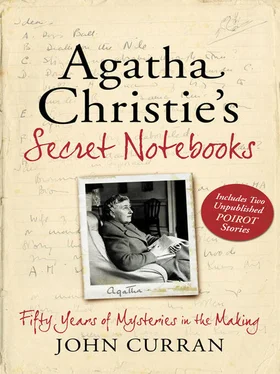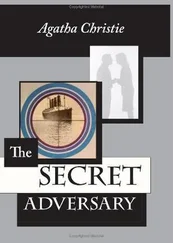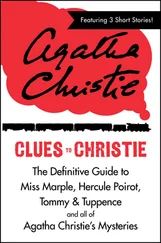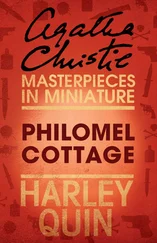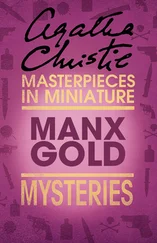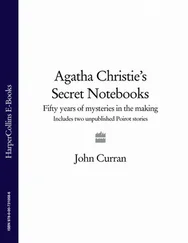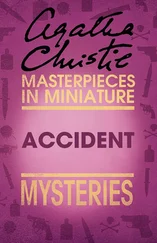The idea of ‘the old General and his wild girls’, from the first extract, is retained (note the change from ‘boys’, in the preliminary notes, to ‘girls’ here) but the rather bizarre idea of Poirot paying someone to allow himself to be killed, presumably as a ruse, was abandoned. The reference to Mrs Barney is to an infamous London murder case when the glamorous Elvira Barney was tried, and subsequently acquitted, for the shooting of her lover Michael Scott Stephen in May 1932.
The potent symbolism of the mythical horses that feed on human flesh transmuting into dope peddlers who carry out a similar loathsome trade is undeniable. But there is an element of sermonising in the story that tends to detract from its plot. Once again Christie trades on our misperception, this time of the seemingly typical retired army stereotype, a not infrequent character in her fiction—Colonel Protheroe in The Murder at the Vicarage, Major Porter in Taken at the Flood, Major Palgrave in A Caribbean Mystery, General Macarthur in Ten Little Niggers and Major Burnaby in The Sittaford Mystery. And there are many more examples. But they are not always to be trusted…
The allusion to the unlike twin is to an idea that crops up again and again throughout the Notebooks (see ‘The House of Dreams’, page 303). As shown by its constant reappearance, Christie never successfully tackled this idea and here was no exception. A certain amount of exasperation is detectable in the exhortation, ‘NO!!’, to herself.
‘ The Girdle of Hyppolita’
Two seemingly disparate cases, an art robbery and a missing schoolgirl, are brought together in the ninth Labour.
This is another story that is considerably changed from Christie’s early conception of it, although traces of the ‘head mistress’ idea are still visible. As can be seen, with this story Christie gave free rein to her considerable inventiveness. There are quite a number of sketches both for the development of the story and for the interpretation of the original myth—a manuscript, an archaeological find and a picture were all considered. And even after the picture was adopted, she still considered some other scenarios:
P at Oganis or Lestranges—very super girl’s finishing school—the frightening Miss Beddingfeld
Is girl there really a crook? Or is she missing millionaire’s daughter who is being hunted for everywhere?
A precious manuscript? A picture? An archaeological find?
A stolen picture? Painted over by one of the girls (crook) and presented to Head Mistress—latter therefore taken it into the right country—custom’s Pass—etc.
Kidnapped schoolgirl—she is new—delivered over to Miss
Nortress—dull with plate [plaits?]—wire on teeth—miserable skinny looking object—they go to Paris—girl disappears on train—(really emerges from lavatory and joins man—all made up—very actressy—in mink coat. On way back from lunch—slips into lavatory—man comes out—hat found on line. Girl found a day later at Amiens—unhurt—dazed.
Theft of famous picture (G of H). It is to be smuggled into France—to dealer there?—crook? Acc[tress] takes employment with ‘elder sister’—meets child—and takes her to Victoria—knock out drops—false actress becomes kid—once in France changes in lavatory—arrives with man—very smart.
Pictures in exhibition with other girls work—P as conjuror—wipes it off with turpentine—exposes the Girdle of Hyppolita
This is another Labour that is rich in plot with two seemingly disparate ideas, the disappearance of a schoolgirl and a stolen painting, neatly tied together. There is a certain similarity to the book that she was to write 20 years later— Cat among the Pigeons —in the smuggling of a valuable item in a schoolgirl’s luggage. The masquerade of an adult as a young girl is also a plot feature of that book, as well as of the short story ‘The Regatta Mystery’.
‘The Flock of Geryon’
A protagonist from ‘The Nemean Lion’ returns to help Poirot investigate a series of odd deaths.
‘The Flock of Geryon’ is the weakest story in the series, and this is reflected in the paucity of notes; those that exist are vague enough to have been developed in almost any way. The following is from Notebook 44, and the sect suggested in the preliminary notes is one of the starting-off points:
P is visited by Miss? (Amelia)—little annuity—exercises people’s dogs—has been reading German book—criminal impulses—sublimation. Could she work for P? A case—her friend—strange sect—down in Devon. Young millionaire’s son—there? Or middle-aged daughter of very rich man? Or rich man’s widow?
There is no particular ingenuity in either the story or the symbolism. It is rescued only by the presence of the enterprising and entertaining Amy Carnaby from ‘The Nemean Lion’. Oddly, there is no mention in the notes of Carnaby’s name. ‘Miss? (Amelia)’ may be Christie’s own shorthand (although it is not very short!) or it may simply be that she had no copy of The Strand to hand to check the earlier name. There is a brief reference to Hitler in this story (see also ‘The Capture of Cerberus’ in the Appendix).
‘The Apples of the Hesperides’
A remote setting provides Poirot with the final clue in a case that really began centuries earlier.
There are fewer notes for ‘The Apples of the Hesperides’ than for any other Labour. The plot is not involved and required little in the way of planning once the main clue of the nun was planted. The basic outline reflects the final version:
Millionaire—gold chalice stolen from him—no clue. P talks to American detective—Pat Ryan—a wild fellow—a decent wife—but wouldn’t get him to run straight—she went back to Ireland—or daughter—a nun. Ireland—the convent—P arrives there—tramp with bottle of brandy—world in my hands
Little tipster in bar in Ireland—‘Atlas’ is his pseudonym—HP says doesn’t look it (horse to back—‘The World’ by Greek Hero out of Geography). You have not to hold up the World—only Hercule Poirot
Some minor details are different—the horse to back is Hercules rather than the more elaborate one of the notes; and there is no tramp.
Like the earlier ‘The Erymanthian Boar’, this case takes Poirot to a remote and beautiful location, this time on the west coast of Ireland. Apart from mentioning a coach tour holiday of Irish gardens in Chapter 11 of Hallowe’en Party, this is his only visit to Ireland and is memorable to him for all the wrong reasons.
Like Sir Joseph Hoggin in ‘The Nemean Lion’, Emery Power loses financially as a result of Poirot’s investigation although in his case there is a spiritual benefit. (There is a minor error of fact when Poirot promises him that ‘the nuns will say Masses for your soul’. Nuns can’t say mass and mass for the soul is celebrated only after a person’s death.) The final scene, in the isolated convent on the edge of the Atlantic, is a particularly poignant one with a wise and telling exchange.
‘ The Capture of Cerberus’
Is the Countess Vera’s nightclub the scene of more than just harmless revelry?
The following extracts refer to the version of the story collected in The Labours of Hercules in 1948 (for the newly discovered version see the Appendix). It is further proof of Christie’s fecundity with plot that she was able to imagine a second allegorical interpretation of the last Labour of Hercules. In the original Greek myth Hercules has to pass into Hell, overcoming the ferocious hound that guards the gates; in the Poirot Labour Hell is a nightclub with a large dog in the entrance foyer. The steps down into the club are labelled ‘I meant well’ and ‘I can give up any time I like’, an amusing take on the old saying ‘The path to Hell is paved with good intentions’. And the hound, originally intended as a nightclub ‘gimmick’, plays a vital part in the plot.
Читать дальше
Конец ознакомительного отрывка
Купить книгу
